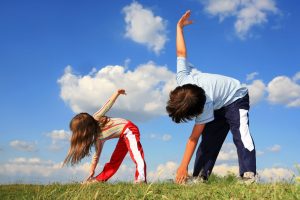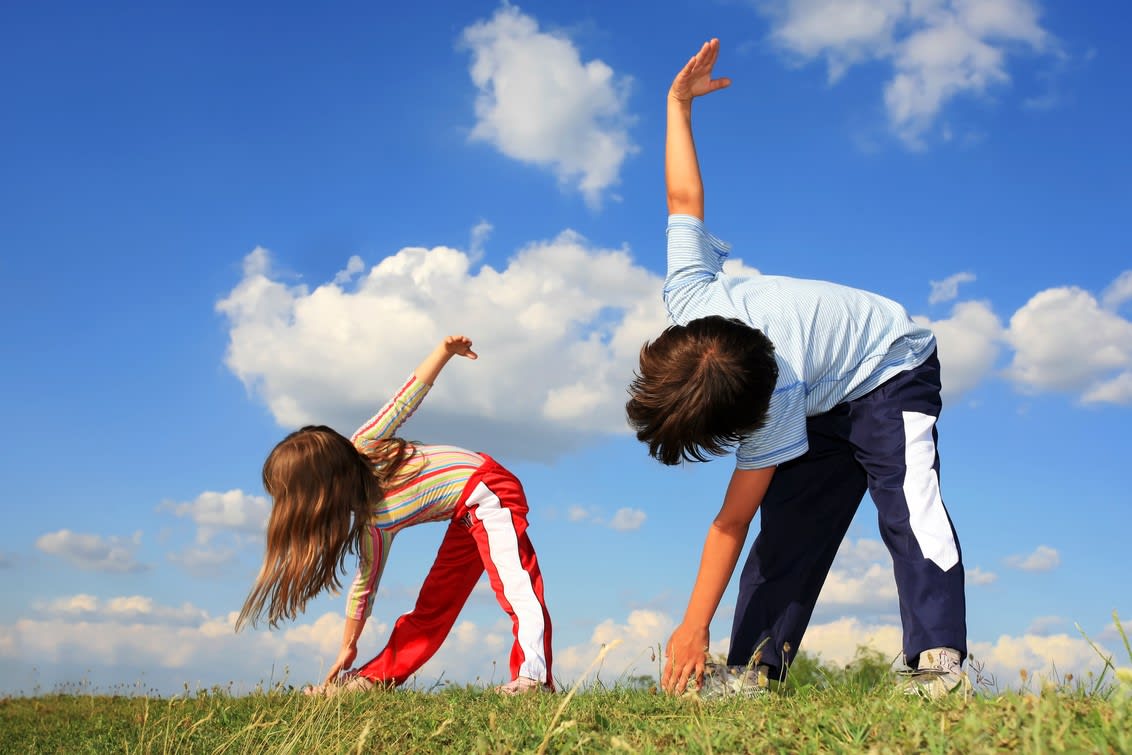Part I of this article covered child and adolescent obesity – the fact that it’s reached epidemic proportions both in the United States and Israel, and the broad steps we can take to help stem the tide. Part II focuses on the specific ways in which we can help ensure not just our children’s future good health, but ours as well.
As much as bad eating habits play a role in childhood obesity, the first positive step for children is to get them to be active and exercise. We live in a sedentary world, and computers and video games have not helped our cause.
Dr. Debi Pillarella, M. Ed., developed a plan of Adventure Education-based activities–activities that make exercise interesting and educational–for children. Here are her tips and advice:
2-5 Years of Age
The Scoop
Kids between the ages of 2-5 need social, physical and intellectual interaction and development. These years are called the building block years, as they lay the foundation from which subsequent skills will grow. Free play, exploration, creativity, song and exposure to a variety of experiences are critical. Ever wonder why kids at this age can’t seem to sit still? They’re learning about their bodies and how to control them within the space they live. Instead of restricting this, confining them to a couch with a video playing, or enrolling them in extensive structured activities, channel the energy in a positive way (see below) and watch your young ones soar. They will tire out and eventually need a rest. (Don’t worry.)
To Do
 Free play
Free play- Catching objects (beanbags, scarfs, playballs, etc.)
- Rolling objects
- Bouncing a ball
- Kicking a ball
- Tossing/throwing a ball
- Hitting a larger stationary ball (on a T) with a bat
- Jumping
- Running
- Walking (forward, backward, sideways)
- Hopping
- Galloping
- Skipping
- Introduction to swimming/water
- Walking a line (low balance beam)
- Pedaling a bike
- Using imaginative or thematic play
- Following simple directions (Simon Says)
- Cooperative games
- Non-competitive relays and sports
- Emphasis on fun and play
- Positive, motivating, encouragement
Not to Do
- Restrictive play
- Sitting still for long periods of time
- Overuse of motorized toys (e.g., battery operated jeeps, etc.)
- Competitive team sports
- Emphasis on winning and hard play
- Negative comments, criticizing, comparing skills of children
5-8 Years of Age
The Scoop
At this age, kids are building on the foundations that were created in the previous years and are moving on to more complex movements and skills. Moving from hitting a stationary ball to one that is thrown, bouncing a ball with two hands to bouncing it with one, and progressing from a bike with training wheels to one without, are all milestones that are accomplished here. Kids at this age can play longer and harder than those at the earlier stage of development. They can actually follow multi-task directions (e.g., run to the cone, jump up and down three times, then run back to me) and enjoy playing in a group more.
To Do
- Bike riding
- Skating
- Scooters
- Skateboarding
- Swimming
- Running around
- Non-competitive sports
- Trying out a wide range of fitness/movement activities (not just those Mom and Dad like or want them to play)
- Introduction to youth sports (basketball, soccer, baseball, etc.)
- Following more complex directions
- Cooperative games
- Non-competitive relays
- Emphasis on fun and play
- Being positive, motivating, encouraging
Not to Do
- Choosing your kids’ sports
- Forceful participation
- Competitive play
- Weight lifting
- Negative, non-encouraging comments
8-10 Years of Age
The Scoop
According to Dr. Ken Cooper, this is a critical age for kids’ fitness. Decline in children’s physical activity occurs during this time frame. Increased computer game use occurs, leaving less time to get up and move. At this age, kids are self conscious about themselves and how they are viewed by and compared to their peers. The athletes of the group start to become labeled, just as those who aren’t as athletic get shunned from team play. Giving kids a lot of successful, fun activity and fitness options in addition to sports will prove valuable as they grow.
To Do
- Fun, play
- Successful activities and sports
- Biking, hiking, swimming, skating, rollerblading, skateboarding
- Walking, running, tennis
- Games and relays
- Partner sports
- Group activities (kid’s fitness classes, martial arts for kids, etc.)
- Being positive, motivating, encouraging
- Not to Do
- Watered-down adult fitness programs
- Long duration, high intensity activities (running five miles non-stop)
- Intense competition
- Negative, non-encouraging comments
10-12 Years of Age
The Scoop
Kids this age are ready for team play as well as individual fitness activities. Youth-sized equipment works well with this age as well. (E.g. low weight dumbbells, low height steps, BOSU, etc.). They are also into music, so tap into their music choices (lyric appropriate, of course) to provide motivation while working out. Getting stronger is also important to this age range. The American Academy of Pediatricians (AAP) suggests introducing resistance training to this age group. Research conducted by Wayne Westcott, Ph. D. as well as Avery Faigenbaum support resistance training and state it is safe and effective for youth as long as it is highly supervised and the programming developed by a qualified professional. Lower weight, higher rep programs that focus on overall strength improvements, functional exercise, balance and flexibility set in a supportive, fun environment work well. Boys and girls strength will be relatively similar until their early teens. Peer acceptance is important at this age and can influence a child’s decision to participate in activity and sport.
To Do
- Sports
- Biking, walking, running, skateboarding, rollerblading, swimming, etc.
- Any activity based on what kids enjoy
- Success, feeling good about performance
- What peers are doing/participating in
- Self selection of activities
- Support, motivation, and positive feedback from parents/family
Not to Do
- Parent selecting activity/sport
- Forceful, nagging from parent/family
- Bodybuilding, power lifting, weight lifting
- Negative feedback from others
When your child is overweight, take action, but do it smartly. Educate your child through example and by letting him or her read material about a healthy life. Gently let your children understand what happens a little later in life to those who can’t get this under control. Too many “adult” diseases are now manifesting themselves in our youth.
But just as important, your relationship with your son or daughter should not be about his or her weight, eating habits or exercise. Be sure to praise and compliment them on any little iota of progress they make in any area. To succeed, they have to feel good about what they are doing. The health of your child may be dependent on tackling these issues early. So don’t delay.
Alan Freishtat is an A.C.E. CERTIFIED PERSONAL TRAINER and a BEHAVIORAL CHANGE and WELLNESS COACH with over 19 years of professional experience. Alan is the creator and director of the “10 Weeks to Health” program for weight loss. He is available for private coaching sessions, consultations, assessments and personalized workout programs both in his office and by telephone and skype. Alan also lectures and gives seminars and workshops. He can be reached at 02-651-8502 or 050-555-7175, or by email at alan@alanfitness.com Check out the his web site –www.alanfitness.com US Line: 516-568-5027.
The words of this author reflect his/her own opinions and do not necessarily represent the official position of the Orthodox Union.

